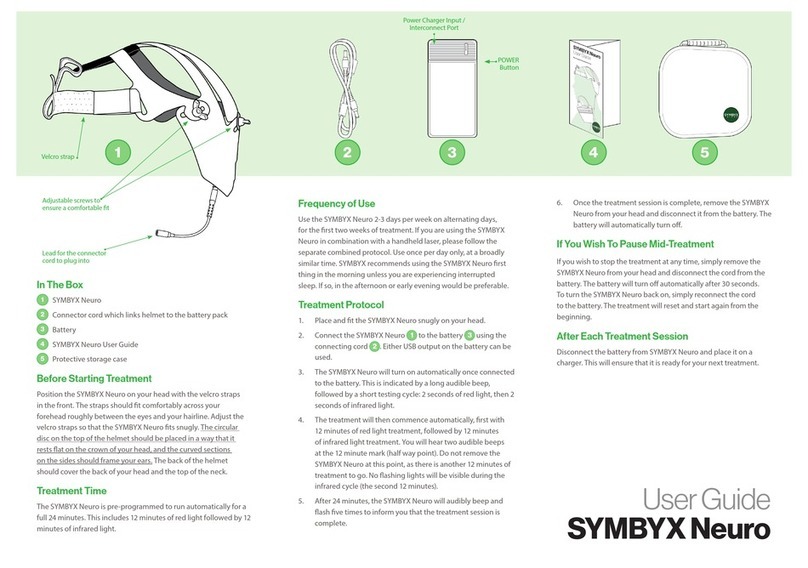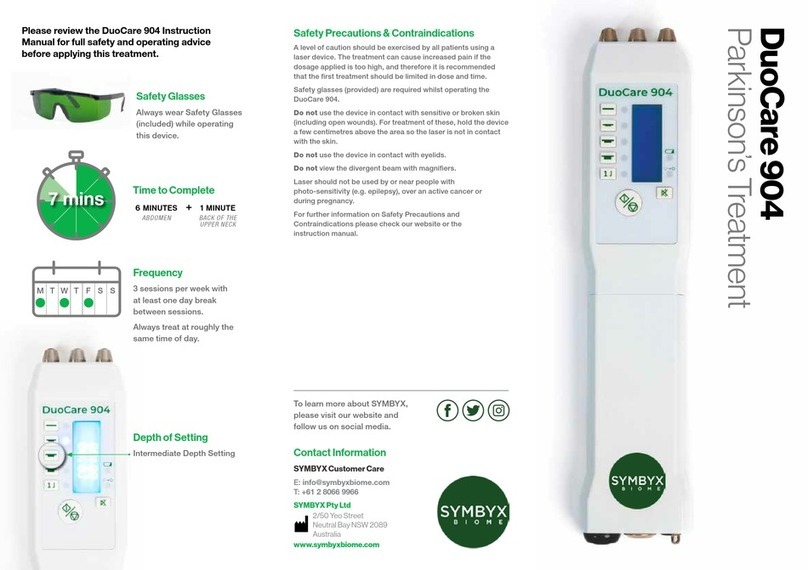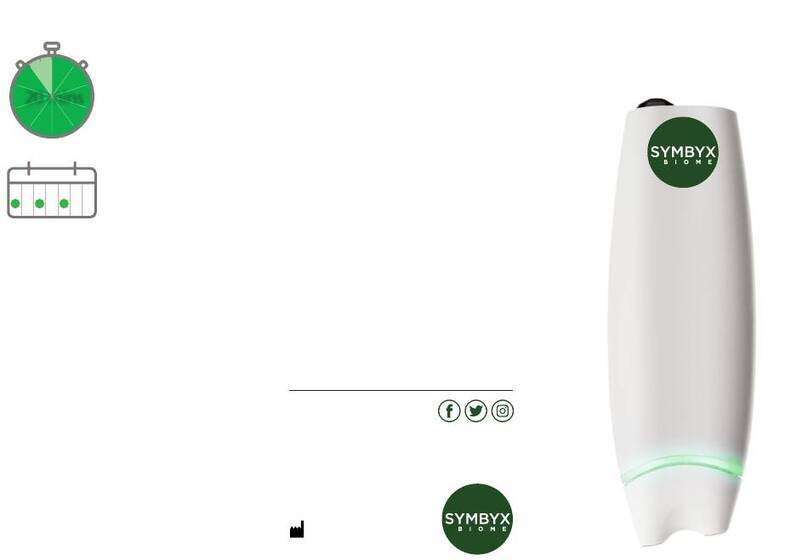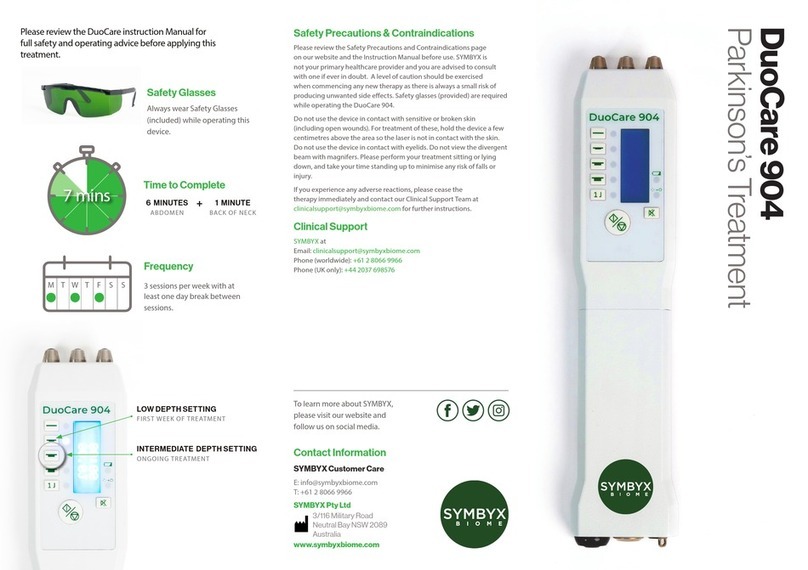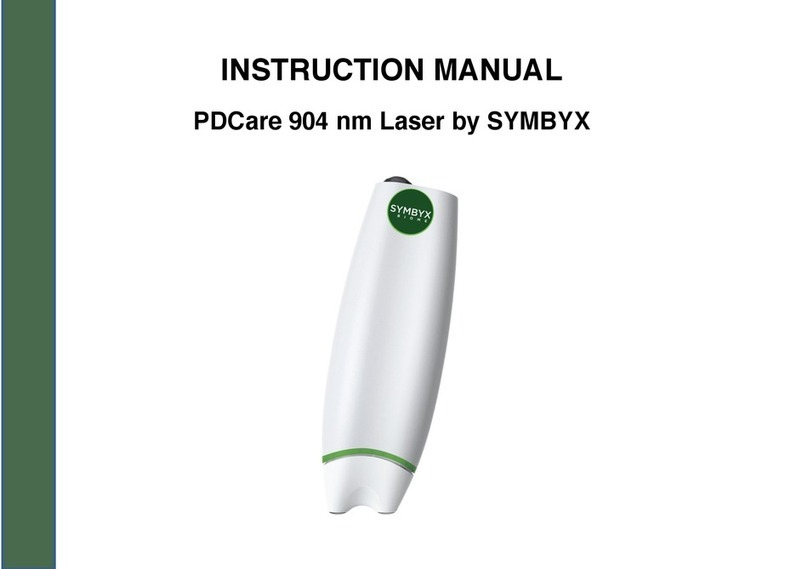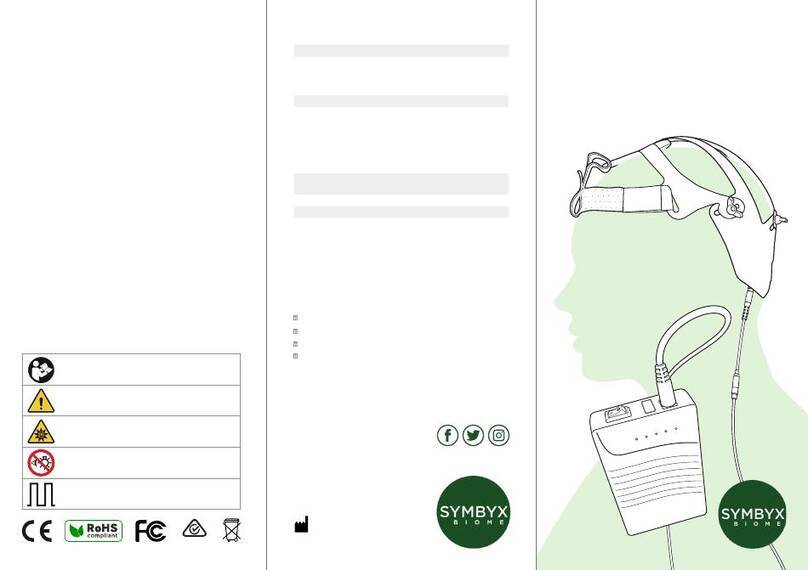
INSTRUCTION MANUAL FOR PROSERIES MEDICAL LASER
10
2. DEVICE DESCRIPTION AND USE
This device is a transportable, battery-operated medical laser product, with which the operator administers non-invasive transient
class 3B infrared or visible laser light to reduce pain and inammation, as well as to promote tissue repair and recovery. This device
is intended to be used as a supplementary treatment modality intended to be operated by a variety of practitioners, e.g., doctors,
nurses, veterinaries, dentists, physiotherapists, dermatologists, chiropractors, and massage therapists. The treatment modality of
medical laser devices is commonly called Low Level Laser Therapy (LLLT), or laser therapy.
Laser is an acronym for Light Amplication by Stimulated Emission of Radiation and emits light with unique properties, which
combined cannot be found in any other light source. These properties can be described briey as monochromatic, coherent and,
generally, highly polarized. Light consists of oscillating electric and magnetic waves, and our vision interprets colours on the basis of
the wavelength content of the light as it enters the pupil and hits the retina.
The wavelength is described as the distance between repeating units of these waves and is measured in nanometers (nm). Light
with wavelengths shorter than about 400 nm (ultraviolet) and longer than 800 nm (infrared) are not perceived as visible to the human
eye. Visible light, when described in nm, are as follows: violet 420 nm, blue 470 nm, green 530 nm, yellow 580 nm, orange 610
nm, and red 700 nm. The light intensity (output power) of lasers is measured in Watts (W). Laser light can be pulsed or continuous,
and the beam can be focused, divergent or collimated. A wide range of lasers are used in laser therapy, and the characteristics and
parameters vary depending on their intended use.
Given the magnitude of treatment parameters, e.g., peak power, average output power, power density, spot size, wavelength, pulse
frequency, duty cycle, aperture design, beam formation, exposure time, treatment procedure, number of sessions and treatment
intervals, etc., it may be difcult for the clinical practitioner to know how to administer effective treatments without a properly
designed device and the assistance of a user manual.
2.1 Device Design
Laser light applied to the skin or tissue may be absorbed, reected, transmitted, or scattered. In order to perform the most efcient
treatments, the laser light has to be able to penetrate and reach the area intended to be treated. Supercially situated conditions,
such as open wounds, therefore require a lower dose, power and transmittance compared to those that are situated deep down
within the tissue, for example in muscles and joint disorders.
